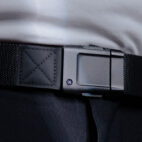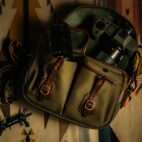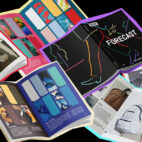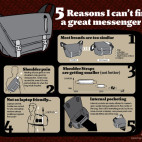We’re hiring :: Come and run Carryology
It’s not every day we seek a Managing Editor for Carryology. But heck, if we’re going to look, we’ll start amongst our awesome community…
So it turns out that Carryology is growing. Fast. And we’ve been struggling to keep up. We want to find someone to put at the centre of the Carryology universe – curating, guiding and nurturing this hub to help it achieve remarkable.
It can’t be just anyone. They need to be a word ninja and story-teller, love a bit of gear geekery, be a digital native and be organised. They should also be keen to live in one of the world’s great surf towns – right near Bells Beach in the south east corner of Australia (not far from Melbourne).
Can you think of anyone awesome to recommend? Someone that inspires you with their energy and drive? Someone who wants to work amongst a thriving team, which includes the Bellroy folk?
Send them this link. Even if you don’t know them that well, this might be the most awesome opportunity they’ve seen (not that we’re biased).
Want to know more?
Then check below for more details.
––––––––––––––––
MANAGING EDITOR – IN A NUTSHELL
For 2/3rds of the week, you’ll be the centre of the Carryology universe – increasing it’s awesomeness and helping reach it’s potential.
For 1/3rd of the week, you’ll be helping share Bellroy stoke as PR person (which should be really complementary skills).
WHAT’S IN THE JOB?
You’ll be running Carryology – curating, guiding and nurturing it to make it remarkable. This includes refining the vision, and ensuring we’re delivering great, insightful content regularly.
The good bit is that you don’t have to generate all the content yourself, or do all the editing yourself, as we have amazing contributors and carry brands to help with that. But you do need to coordinate the flow, tighten the posts, and give feedback and suggestions to help us all improve.
On the Bellroy side of things you’ll be sharing Bellroy stories with the world. From reaching out and responding to press, through to building a fun and engaging social media act.
WE’RE AFTER A PARTICULAR SET OF TRAITS
You’re really good with words. Sure, you get the nuts and bolts of how to put them together, but more importantly, you know how to communicate and tell stories. Your writing has personality – flexing your prose to take the reader on a journey. If your writing is stuffy and overly proper, you’ll probably implode.
But you also like a bit of gear geekery. Prior bag and carry geeking is a bonus, but you can substitute with some other gear obsession (after all, we have a whole site set up to teach you about carry). In this job, you need to combine the gear geekery with the story telling – finding those angles that help an Ultra High Molecular Weight PolyEthylene fabric engage our readers rather than put them to sleep.
Online communities excite you, so you get all the social media etiquette and are not scared to reach out and make digital friends.
And you need to dig learning and progressing your skill set. That means you’ll be comfortable talking about your weaknesses as well as your strengths, and not mind working hard at getting better. If you like comfort and steady progression this job will hurt. We also work in a very collaborative environment, and so you’ll need to care more about the end result than whose ideas achieved it.
Working across content management platforms and playing between various Cloud based software should be second nature to you (some might say your fluent in Digital). You might even have a few tricks up your sleeve in Photoshop. Bonus points for entrepreneurial drive and/or a touch of business nouse.
You’ll need 2+ years of experience (or an amazing display of maturity if you have less than that).
WE’RE GROWING FAST
That means we go through 5 years of changes each year. Our roles morph, we volunteer for extra tasks, we all care a lot about helping good things happen. If you don’t like change, this job will hurt. But if you do then you can be part of an incredible journey.
WHY WORK WITH CARRYOLOGY AND BELLROY?
Because we can help you flourish.
You will get to work in the heart of Bellroy and Carryology, immersing yourself in the best of both worlds. You will be surrounded by people that want to see the world flourish, and are working hard to help that happen. We find that a pretty energising environment to be a part of…
Start date: Yesterday
TO APPLY
You need to really understand Carryology and what makes us tick.
If you think you’d be a good fit, please respond with a paragraph elevator pitch, and then answer the three questions below as honestly as you can (we should both be making sure we’re right for each other):
Q1: Tell us two ways that you would add lots of value to Carryology, that are specific to Carryology.
Q2: In fewer than 200 words, share an insight around the hardest professional challenge you’ve faced in the last year.
Q3: Give us your top 3 tips for being a great Carryologist
Please email your elevator pitch and responses to jobs@carryology.com. Thanks!





 Carry Awards
Carry Awards Insights
Insights Liking
Liking Projects
Projects Interviews
Interviews











